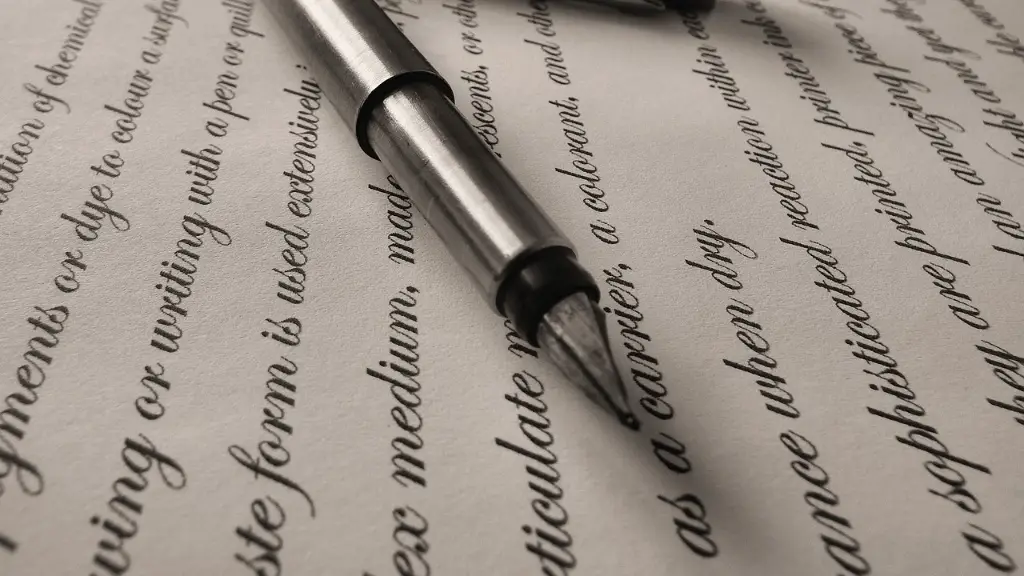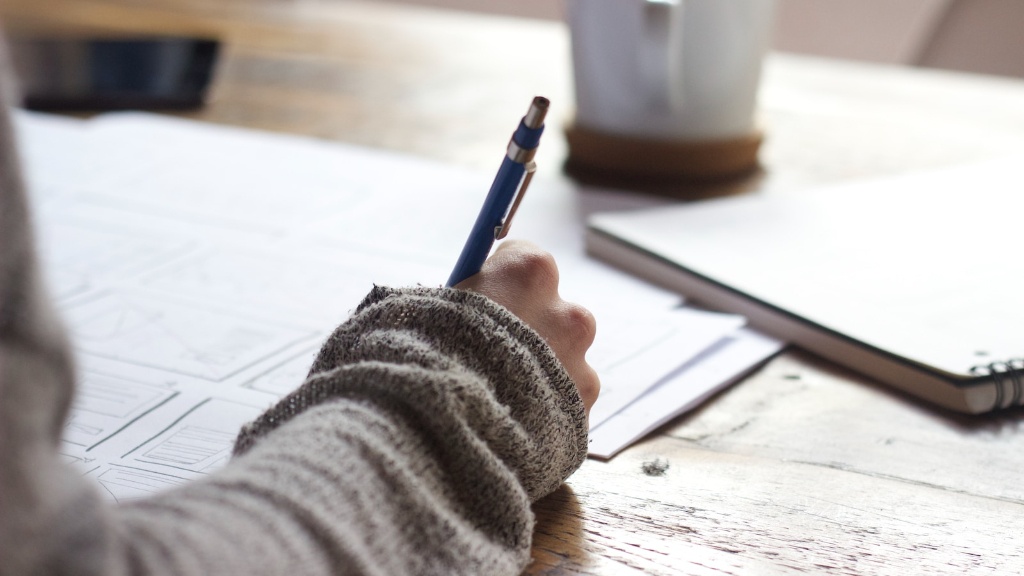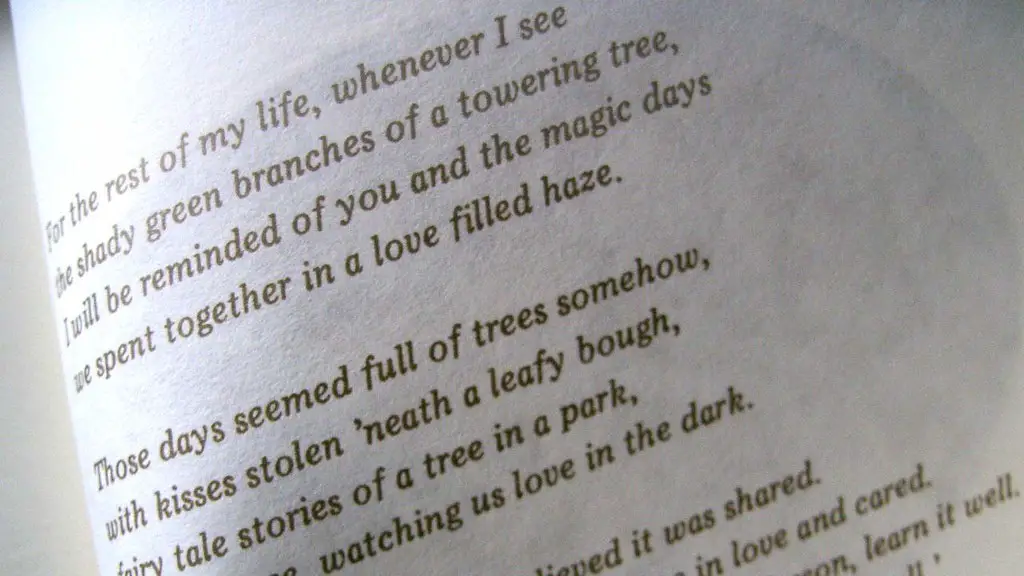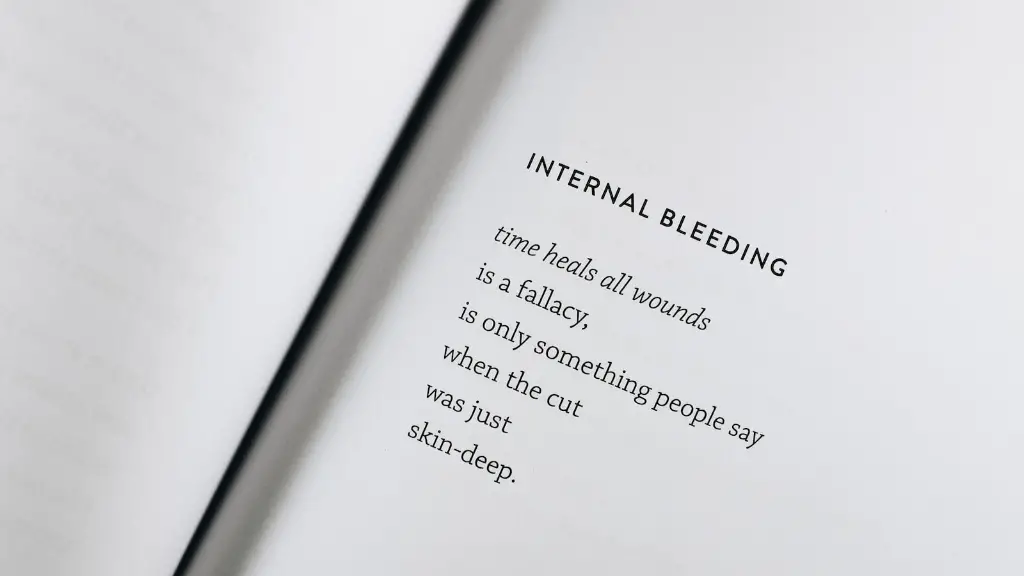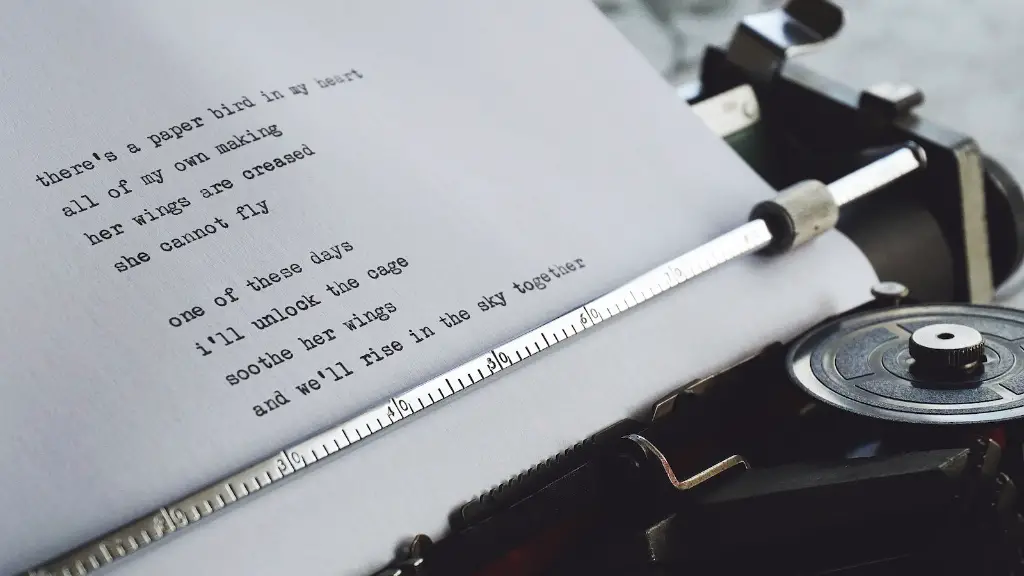Part 1: Introduction to Teaching Rhythm in Poetry
Exploring and teaching rhythm and rhyme in poetry can be one of the most rewarding experiences for both students and teachers. The skill of recognizing and manipulating rhythmic patterns often helps to improve the quality of poetic writing and encourages interest in both form and content. Teaching rhythm in poetry can be a great way to get young minds engaged in creative writing and poetry, and help foster literacy development. Teaching rhythm also helps poets to appreciate the nuances of writing, from the sounds of the words to the way in which the lines fit together.
By teaching the essentials of rhythm and rhyme, teachers can deepen their students’ understanding of poetic composition and the rich literary form. Mastering the conventions of rhythm and rhyme helps layout the way to writing and understanding effective poetry, as well as a great deal of other writing. Here, we’ll take a look at the basics of teaching rhythm and rhyme in poetry, covering topics like poetry rhythm devices, poetry meter and rhythm patterns, and rhythmic structure in poetic form.
Part 2: Poetry Rhythm Devices
One of the fundamental aspects of teaching rhythm and rhyme in poetry is instilling the concept of rhythm devices. These are musical devices used to create the sound of a piece of poetry, such as repetition, alliteration, onomatopoeia, assonance, and consonance. Each type of device has its own rhythmical effect and can be used as a way of conveying emotional content in a piece of poetry. Teaching poets to use and identify rhythm devices can be a great way to help them better express themselves, and give them a greater understanding of rhythm and rhyme.
Repetition is a poetic device used to create emphasis, consistency and unity in poem. Alliteration is the repetition of initial consonant sounds in a line of poetry, and creates a musical effect. Onomatopoeia are words that imitate sounds and add to the rhythm of the poem in addition to adding a sonic quality that adds to the effect of the poem. Assonance is the repetition of vowel sounds to create an internal rhyme, while consonance is the repetition of consonant sounds to create a sense of pattern and texture.
Part 3: Poetry Meter and Rhythm Patterns
Another important aspect of teaching rhythm and rhyme in poetry is meter. Meter is the pattern of stressed and unstressed syllables that helps to create the rhythm of a poem. One of the most important elements of meter is the number of meter per line, which is often referred to as the “metrical foot”. Teaching about different meter feet, such as iambic, trochaic, anapestic, and dactylic, will help students to better understand the structure and flow of a poem.
In addition, teaching students about the different rhyme schemes used in different types of poetry is important to teaching rhythm in poetry. The most common rhyme schemes are the ABAB, AABB, and AAB rhyme patterns. Explaining how different patterns can be used to create the desired effect can be a great way to help students develop their poetic skills.
Part 4: Rhythmic Structure in Poetic Form
Finally, teaching about the use of rhythmic structure in poetic form is also important for teaching rhythm in poetry. Poetic form includes the total structure of a poem, from how the lines fit together to how the sound of the poem is affected. Teaching about the variations of poetic form allows students to better understand the rhythm of a poem and how each line contributes to the overall effect.
Form can also be used to create the desired effect in a poem. For example, teaching students about rhyme couplets, tercets, and other forms of poetry can help them to understand how certain structured forms help to create a desired effect. By mastering the structure of a poem, students can learn to better analyze and appreciate the rhythm of a poem.
Part 5: Rhyme and Alliteration as Tools for Engaging Young Learners
Exploring and teaching rhythm and rhyme in poetry can also be a great way to engage and motivate young learners. By understanding the fundamentals of rhythm and rhyme, young poets can use them as tools to capture and express their ideas. The use of rhymes and alliterations are especially helpful in engaging younger audiences, and can even be used to make poems more memorable and entertaining.
In addition, teaching dynamic meter, such as the dactylic meter, can help to foster an understanding of rhythm in young poets. Through the use of accents, pauses, dynamics, and other musical devices, dynamic meter is an essential tool for teaching rhythm in poetry. Teaching students the basics of dynamic meter, such as the number of unstressed and stressed syllables, can help to build a strong understanding of rhythm and the structure of a poem.
Part 6: Teaching the Elements of Sound and Style in Poetry
In addition to teaching the fundamentals of structure and form, it is also important to explore and teach the elements of sound and style in poetry. By exploring words, phrases, and expressions in poetry, teachers can create an environment in which students can explore the use of poetic devices to create the desired effect. Writers must understand the nuances of sound to create effective and engaging poetry, and teaching the basics of sound and style can help to foster this understanding.
One way to explore sound and style is to teach about each of the elements that contribute to the sound of a poem, such as rhythm, rhyme, alliteration, assonance, and consonance. Teaching about how these devices can be used together to create the desired effect can help students to develop a greater understanding of poetic expression.
Part 7: Enhancing Creativity and Self-Expression in Poetry
Exploring and teaching rhythm and rhyme in poetry is also a great way to enhance the creativity and self-expression of young poets. Creative teaching strategies such as found poetry and interactive reading can help to engage students and motivate them to explore their own poetic voice. Found poetry, in particular, encourages students to explore their creativity in a fun and engaging way by taking existing texts and manipulating them to create a poem.
Interactive reading can also be used to help students to explore their own writing style by engaging in conversations and discussions about the content of a poem. Through interactive reading, teachers can get their students to think critically about the poem, and how to improve it with poetic devices such as rhythm, alliteration and assonance.
Part 8: Understanding the Social, Cultural, and Historical Elements of Poetry
Finally, it is important to explore and teach the social, cultural, and historical elements of poetry. By exploring and teaching how different historical, social, and cultural contexts interact with poetic content and structure, students can gain an understanding of how poetry can express ideas and shape social discourse. Teaching the basics of poetry’s role in history, culture and society can help deepen students’ understanding of poetry, and sparks their curiosity in the subject.
Exploring poetic literature from different regions, cultures and time periods can also help to broaden students’ understanding of poetry and its importance. Discussing how different poets use language, structure, and performance to engage different audiences can help students to understand the powerful impact of poetry on society.
Part 9: Creating a Positive Learning Environment for Poetry
Teaching rhythm and rhyme in poetry can be a great way to create a positive learning environment for students. By providing a safe space in which students can express themselves and explore their creativity, teachers can help to support and encourage young poets to find their own writing style. Through collaborative activities and group discussions, teachers can reinforce the importance of poetry and its ability to express ideas, while providing their students with the necessary guidance and resources to help them grow and develop as young poets.
Exploring and teaching rhythm and rhyme in poetry can also give students a better understanding of the conventions and techniques used to create poetry. Teaching how form, structure, sound and style affects poetry can help to create interest in both form and content for budding poets, and provide them with the tools to develop their own writing style.
Part 10: Fostering and Encouraging Creative Writing
Finally, teaching rhythm and rhyme in poetry can help to foster and encourage creative writing in young poets. Exploring how poets use rhythm and rhyme to express their ideas can help to open young minds to their own creative potential. By teaching the fundamentals of creative writing and encouraging students to explore their ideas through poetry, teachers can help to nurture their students’ creativity and self-expression.
In addition, teaching the basics of structure and writing techniques used to create a poem can also help students to better understand the form and content of a poetic work. Through exploring different poetic forms and devices, students can develop their understanding of the conventions of poetry, and learn to appreciate the subtleties of language and poetic devices.
